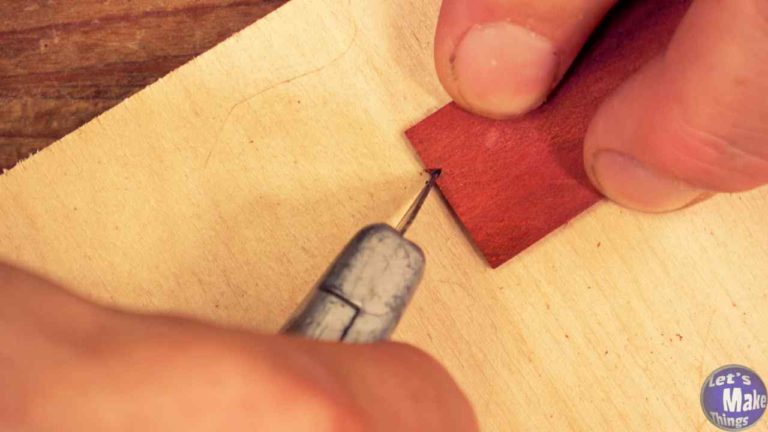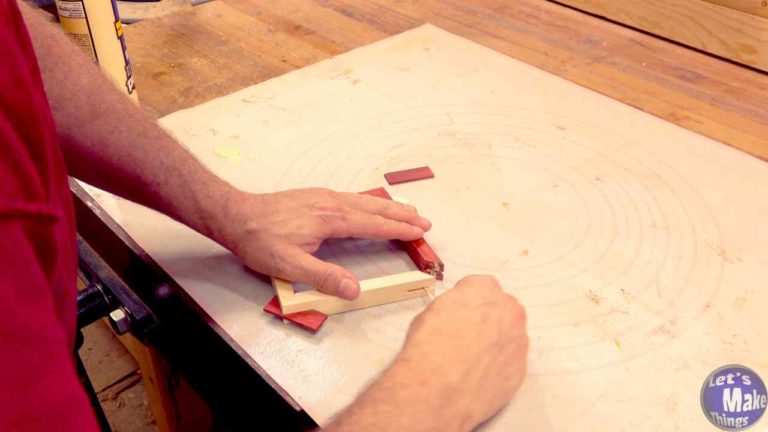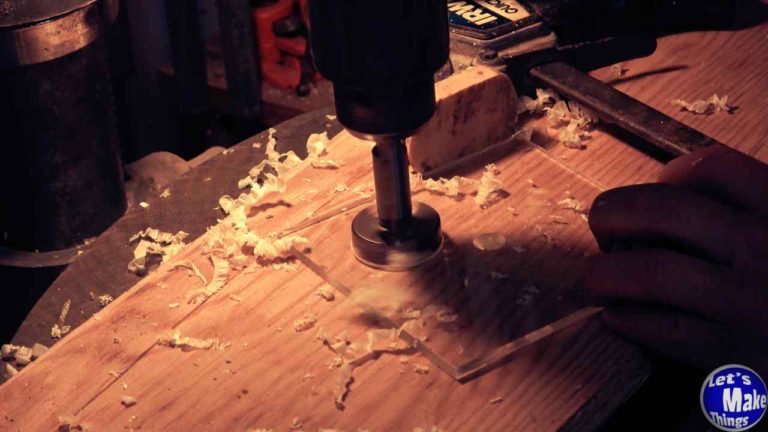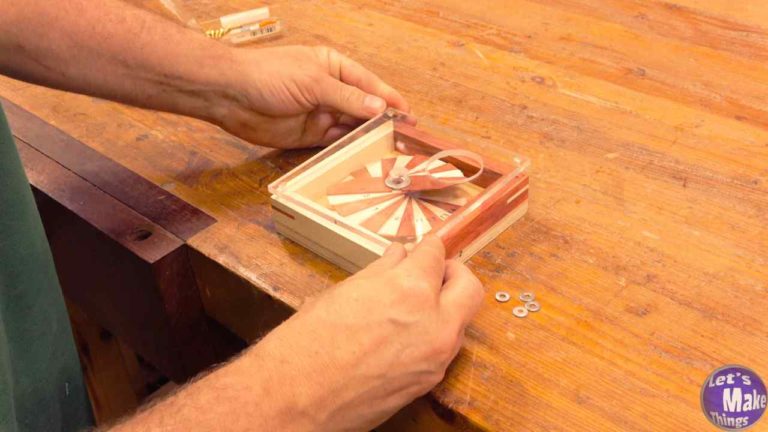Gauges
Spiral depth gauge
I love a good problem solution. This little gauge is my solution to the drop down thickness gauge type router pads. With this gauge, each blade is a 16th of an inch, which is a 1/16″ farther from the top of the pad as you descend down. Dial the spiral to get to the height you’re looking for and set your router on the top of it and adjust the bit and the base. For a visual example, watch this video.
watch all steps in this video before starting
Please use the material and tool list below as a guide to finding the products locally.
Materials
- (12) 1/16″ x 3/4″ x 4″ Hardwood
- (2) 1/2″ x 7/8″ x 4 1/4″ wood strips
- (2) 1/2″ x 7/8″ x 5 1/4″ wood strips
- 1/2″ x 5 1/4″ x 5 1/4″ Plywood
- 1/4″ x 5 1/4″ x 5 1/4″ Plexiglass
- 1/4″ x 2″ Machine screw (cone shaped head)
- 1/4″ Thumb knob or wing nut
- (4) #4 x 3/4″ Wood screw
- 1/4″ Washer
- Wood glue
Tools Needed/used
- Table saw
- Drill press
- Thickness planer (very optional)
- Sanding Block
- Fine ruler
- Knife
- Glue mat
- C-Clamps
- Squeeze clamps
- Awl
- Permanent marker
- Countersink bit
- Number punch set (optional)
- Caliper
As an amazon associate I earn from qualifying purchases.
Step by step instructions
2. Templates & Marking each blade
Each of the blades need to be offset from the next. To get an accurately spaced offset, we’ll take one of our blades and create a template by adding a couple notches on each end. We’ll measure from each edge at a 1/4 inch.
Now it’s a matter of lining each of the other blades up to the template we created and marking them. When all blades have been marked, we’ll take the blade with the notches and cut off angles.
3. Blade Gluing
You’ll want to glue in stages, starting by pairing each piece, adding clamps and giving each a chance to dry. Then you’ll glue those pairs, rinse and repeat. I glued each blade to the next blade, offset by the quarter inch we talked about in the last step.
4. Baseplate and Acrylic Center
We’ll take the 5 1/4″ x 5 1/4″ plywood piece and connect the diagonals to find the center and then clamp the acrylic piece and drill both out with a 1/4″ brad point bit. Since we’re using a quarter in machine screw, we’ll want to use a countersink bit to create that cone shape in our acrylic.
5. Base Enclosure
In this step, we’ll create a spacer wall. This spacer wall will correct the thickness of your acrylic. For a more detailed explanation of fixing the inaccuracy of the acrylic, watch the video that goes with this step.
We’ll take 4 sections of wood and create a box. I mitered mine and added splines but this is absolutely not necessary. To be clear, joints are unnecessary as the pieces may be butted up to each other.
6. Attaching the Enclosure
However you chose to make a box in the last step, we’ll now glue those pieces onto the plywood. I used several clamps but forgot to protect each of the pieces of wood when I clamped. To fix this, I used a clothes iron and steamed each of the blemishes out. Click here to see the process.
7. Access Window
We’ll add an access panel to the acrylic with a 1 1/2″ Forstner bit, along one of the diagonal lines of the acrylic square. You’ll have to decide where that is. Next, I cut the hole out on my drill press. It’s important to use a clamp of some sort to offset the torque that this large bit we’ll put on the acrylic as it spins.
9. Attaching the plexiglass
I taped the acrylic and the plywood together with painter’s tape. We’ll measure in on every corner 3/8’s inches and drill a hole that’s slightly smaller than the 1/4″ x 3/4″ wood screws. Afterwards, we’ll remove the acrylic and countersink each of the holes we just made so that the wood screws can fit in and below the surface.
Tip Jar
If you found any errors on the page, please use my email below and contact me!












